

The Timeline highlights significant developments in the history of financial regulation against U.S. and world events. Choose a different decade below, or scroll down to discover more.
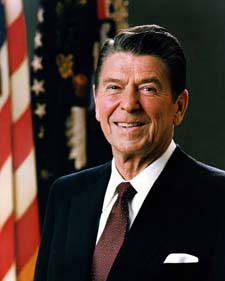
SEC Rule 19c-3 directed that securities listed on the NYSE after April 26, 1979 could be traded off the exchange while allowing the NYSE to continue to restrict off-board trading of previously listed securities.
In Chiarella v. United States, the U.S. Supreme Court ruled that a printer who learned of a tender offer while preparing materials for the bidders and bought shares of the target company before the information became public was not an insider who could be charged with a violation of Rule 10b-5. The court held that mere possession of nonpublic information did not give rise to a duty to either disclose such information or refrain from trading.
In response to requests from money market funds that, bearing no load, were unable to obtain funds for distribution costs, the U.S. Securities and Exchange Commission issued Rule 12b-1, allowing annual fee deductions to pay for the distribution and marketing of mutual funds. After implementation of the rule, no-load funds grew to dominate the market.
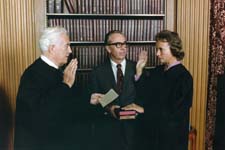
A joint project of the North American Securities Administrators Association and the NASD, the Central Registration Depository (CRD) allowed state and federal regulators to share information about broker-dealers with each other.
To meet his campaign promise to "get the government off the backs of the people," President Reagan established the Task Force on Regulatory Relief, led by Vice President George H.W. Bush. The Task Force was charged with examining the effects of each government regulatory agency on industry.
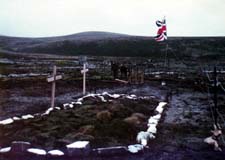
Enacted to aid small businesses in the capital formation process, Regulation D provided a safe harbor from ’33 Act registration for private and limited offerings. One of these safe harbors replaced former Rule 146. The North American Securities Administrators Association approved a Regulation D rule, designed to coordinate filings at the state level.
The Futures Trading Act brought some clarification to the respective jurisdictions of the U.S. Securities and Exchange Commission and of the Commodity Futures Trading Commission. The SEC retained jurisdiction over options in securities, while the CFTC kept jurisdiction over futures contracts and options on futures contracts.
Following the Williams Act, many states adopted their own statutes regulating takeovers. In Edgar v. MITE Corp., the U.S. Supreme Court ruled that the Illinois Business Takeover Act had been pre-empted by the Williams Act and imposed an unconstitutional burden on interstate commerce.
The Nasdaq National Market System offered price and volume information on a select list of heavily-traded stocks within 90 seconds after execution. By 1990, the re-named Nasdaq National Market consisted of more than 2,500 stocks, many from the growing tech sector.
Congress increased the proportion of assets that thrift institutions could hold in real estate and commerical loans, leading to expanded investments in real estate development and a subsequent crisis in the savings and loan industry.
Rule 415 permitted shelf registration: registration of a continuous offering of securities for up to two years. Issuers were permitted to maintain the currency of the information in their registration statements by referring to their regularly-filed reports to the U.S. Securities and Exchange Commission. In 2005, the SEC put in place automatic shelf registration filings available to WKSIs: well-known, seasoned issuers.
In Gartenberg v. Merrill Lynch, the Second Circuit Court of Appeals found that for mutual fund fees to be excessive under Section 36(b), they had to bear "no reasonable relationship to the services rendered." In 2010, the U.S. Supreme Court upheld the ruling in Jones v. Harris Associates L.P..

The circumstances under which a tippee would be liable for trading on material non-public information were addressed by the U.S. Supreme Court in Dirks v. SEC. The ruling limited liability to situations in which the tipper was acting to receive a personal benefit in breach of a fiduciary duty.
A provision of the 1982 Tax Equity and Fiscal Responsibility Act eliminated all bearer securities, effective in 1983, encouraging the municipal bond market to move from paper certificates to electronic book-entry issuances, and opening the way for increased bond trading and more effective disclosure.
Over $2 billion of bonds supporting Washington Public Power Supply System Projects 4 and 5 went into default, raising questions about what various parties to the bond underwritings knew at the time of issuance, and focusing attention on the need for continuing disclosure on the financial status of issuers. After pressure from Congress, the U.S. Securities and Exchange Commission issued a report on the WPPSS default in 1988, highlighting ongoing problems in issuer disclosure in the municipal market.
The U.S. Securities and Exchange Commission convened an advisory committee to review laws governing corporate takeovers and to recommend reforms, in light of an accelerating market for corporate control. The committee affirmed state supremacy in takeover law, but recommended federal legislation, which was not passed by Congress.

NASDAQ launched the Small Order Execution System (SOES) providing market makers not only access to quotes, but also the ability to trade in small volumes of select issues.
The Insider Trading Sanctions Act allowed the U.S. Securities and Exchange Commission to seek damages up to three times the amount of profits gained or losses avoided from trading on inside information.
After the collapse of the savings and loan industry, U.S. Representative John Dingell (D-MI) held hearings to investigate whether the federal government should take over issuance of accounting standards and oversight of auditors.
The Financial Accounting Standards Board formed the Emerging Issues Task Force (EITF) to identify and resolve financial accounting issues on a timely basis, and to minimize the need for the FASB to address narrow implementation, application or other emerging issues that could be analyzed within generally accepted accounting principles. EITF members included senior technical partners of major firms, statement preparers and user representatives. The SEC Chief Accountant was given privilege of the floor and used the EITF Forum to issue announcements.
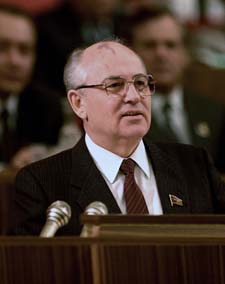
The Committee of Sponsoring Organizations (COSO) was organized to sponsor the National Commission on Fraudulent Financial Reporting. The National Commission was known as the Treadway Commission after its first Chairman, former SEC Commissioner James C. Treadway, Jr. The Treadway Commission studied the causal factors that can lead to fraudulent financial reporting, and concluded that improvements were needed in corporate reporting on internal controls, independent audit committees, auditor detection, reporting of fraud and auditor quality. In 1992, COSO published Internal Control - Integrated Framework, establishing a common definition of internal control that serviced the need of different parties for assessing and improving their control systems. The framework was revised and reissued in 2013.
The Revised Uniform Securities Act (RUSA) attempted to update the Uniform Securities Act of 1956. The RUSA proved controversial from the outset, with representatives from the North American Securities Administrators Association briefly withdrawing from the drafting process in protest because of provisions that threatened to undermine states’ ability to regulate securities on the basis of their merit as “fair,” “just,” and “equitable” investments, rather than on the basis of how their issuers met disclosure requirements.
A shareholder rights plan, nicknamed the "poison pill," was developed in the early 1980s as a defensive tactic used by a corporation's board of directors against a hostile takeover. In 1985, the Delaware Supreme Court upheld poison pills as a valid instrument of takeover defense in Moran v. Household International, Inc..
Congress held hearings on "non-bank banks," in response to a proliferation of new businesses selling money market funds and securities instruments, nearly unregulated by current banking and securities laws. In 1987, Congress passed the Competitive Equality Banking Act, grandfathering existing non-bank banks.
Pension fund stewards - such as Harrison Goldin, Comptroller of the City of New York; John Konrad, State of Wisconsin Investment Board; and Jesse Unruh, California State Treasurer and trustee of the California Public Employees Retirement System (CalPERS) - founded the Council of Institutional Investors to bring the power of institutional holdings to bear on corporate governance reform.

This SEC no-action letter promoted market experimentation by providing for regulation of Instinet (and thus other electronic exchanges or information systems) as a broker-dealer rather than as an exchange.
During debate on the Tax Reform Act of 1986, U.S. Senator Robert Packwood (D-OR) proposed that the interest on all subsequently issued municipal securities be subject to phased-in federal income tax. Trading and issuance of municipal securities came to a halt, but resumed the next day when he retracted the proposal.
The Tax Reform Act of 1986 changed the tax benefits of securities and financial transactions, and eliminated many forms of tax shelters. The Act had a profound impact on the structure of the municipal securities market. Provisions of the act sharply curtailed the issuance of industrial development bonds, eliminated commercial banks as buyers of municipal securities and, to a lesser extent, limited participation in the market by property/casualty insurers. The municipal securities market ceased to be dominated by institutional buyers and became retail-oriented. The inability of many dealer firms to profit from secondary trading activity put pressure on them to obtain negotiated underwriting business, contributing, in turn, to incentives to make political contributions and pay kickbacks.
Many businesses hawked the gospel of get rich quick, running their enterprises as illegal pyramid schemes by failing to tell investors that they themselves would be responsible for their earnings through their own sales efforts. The Attorneys General of ten states used their state securities laws to investigate and shut down dozens of these operations as illegal pyramid schemes. The states were backed by federal enforcement efforts; the United States Postal Service issued cease and desist letters to the operations that made use of the mails for their sales efforts.
Between 1980 and 1982, E.F. Hutton & Co. “kited” checks between hundreds of banks, using the lag between the transfer of funds and its actual deposits to take zero interest loans of as much as $250 million per day. The firm’s guilty plea spared its executives from prosecution, helped it avoid a possible ban on selling securities, and resulted in a $2.75 million dollar fine that observers derided as inadequate. State securities regulators threatened to suspend E.F. Hutton’s brokerage licenses, leading to multiple settlements that further damaged the firm’s reputation and ultimately precipitated its takeover.
With an increasing number of investors falling prey to “boiler room scams,” the North American Securities Administrators Association released Calling for Your Dollars, a short educational film that showed common fraudulent telephone sales tactics and encouraged would-be investors to hang up if a pitch sounded too good to be true. Regarded as the first investor education film, Calling for Your Dollars helped lay the foundation for further investor education efforts.
When the New York Stock Exchange revised its listing standards to allow multiple classes of stock, the U.S. Securities and Exchange Commission issued a rule on behalf of shareholders potentially disenfranchished by the revision. While the rule was later struck down in court, most exchanges agreed to maintain the one share, one vote standard.

Shearson/American Express v. McMahon established that agreements to arbitrate customer claims against securities firms, brought under the ’34 Act, were enforceable.
A Kansas municipal issuer tried to call bonds that market participants believed had been escrowed to maturity with backing from U.S. Treasury securities. This led to widespread questioning as to whether and under what circumstances bonds believed to be escrowed to maturity actually could be called, giving momentum to a move toward disclosure of call features.
During October, the financial markets experienced extraordinary volatility, and on October 19, the market dropped by 22.6%. A report by the Presidential Task Force on Market Mechanisms (Brady Report) found that numerous mechanical and structural issues contributed to the break, including the lack of inter-market communication and regulation.
Aimed at regulating the growing financial planning industry, the North American Securities Administrators Association’s model uniform rules for investment advisers and investment adviser representatives set out ethical practice standards and established a system for their initial registration. The rules set minimum financial requirements and recordkeeping protocols, and instituted new standardized exams that would serve as a prerequisite to registration. They required an adviser to furnish each client or prospective client with written disclosures regarding their services, fees and investment strategies.
The first office of the North American Securities Administrators Association opened in Topeka in 1919. In 1987, NASAA relocated to Washington, D.C.
In CTS Corp. v. Dynamics Corp. of America, the U.S. Supreme Court upheld an Indiana law that allowed Indiana-chartered corporations with significant numbers of Indiana shareholders to opt into a protective scheme, forbidding an acquirer of a controlling block of shares the ability to use the voting power of those shares to appoint a new board of directors. A majority of the court also found that the Indiana statute was not preempted by the Williams Act, making it clear that states could pass laws that in some way restricted these transactions, so long as they were reasonable and did not interfere with that the federal law’s goals.
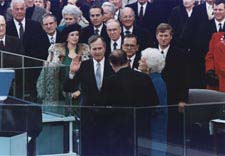
The AICPA commissioned the Special Committee on Standards of Professional Conduct, led by former AICPA Chairman George D. Anderson, to recommend reforms to professional standards for the accounting profession. It recommended mandatory peer review and created the Plan to Restructure Professional Standards in 1989.
In Basic, Inc. v. Levinson, the U.S. Supreme Court held that private plaintiffs could be permitted to plead that they had been injured by reason of the market effects of a fraudulent statement of which the plaintiffs themselves had been unaware. The “fraud on the market” theory had a significant impact on class-action lawsuits.
High profile insider trading cases against Dennis Levine, Ivan Boesky and Michael Milken led to the passage of the Insider Trading and Securities Fraud Enforcement Act (ITSFEA), which stiffened penalties for insider trading and created a private right of action for those trading contemporaneously with anyone violating the securities laws by purchasing or selling a security while in possession of material inside information.
Dual class capitalization allowed a corporation to issue stock with different voting characteristics. Rule 19c-4 limited the ability of corporations to deviate from one share, one vote. The rule was struck down in 1990 by the District of Columbia Court of Appeals in Business Roundtable v. SEC.
To combat fraud in the market for penny stocks – stocks that trade for less than a dollar – the U.S. Securities and Exchange Commission convened the Penny Stock Task Force, enlisting the assistance of the North American Securities Administrators Association. SEC regional offices collaborated with state regulators to share information about penny stock manipulation and educate investors about fraudulent practices.
The North American Securities Administrators Association and the NASD established criteria to allow shares traded on Nasdaq to be exempted from state securities registration requirements. A Memorandum of Understanding between NASAA and the NASD determined the factors for exemption of securities from state registration requirements and designated those exempt securities as Nasdaq National Market System securities.
NASD made its Small Order Execution System (SOES) mandatory after the 1987 market break. Private traders – dubbed “bandits” – profited by jumping ahead of market makers.
In South Carolina v. Baker, the U.S. Supreme Court found that the Constitution does not forbid federal taxation of municipal securities.

Reversing the 1953 Wilko decision, the U.S. Supreme Court ruled in Rodriguez De Quijas v. Shearson/American Express that agreements to arbitrate ’33 Act claims are enforceable.
Following its report on the Washington Public Power Supply System bond default, the U.S. Securities and Exchange Commission adopted Rule 15c2-12, requiring underwriters to obtain and review an issuer’s official statement before bringing any municipal securities issue in excess of $1 million to market. The rule also required delivery of the official statement to requesting potential purchasers. The rule fulfilled the necessary condition for the Municipal Securities Rulemaking Board to serve as a central source for official statements.
The U.S. Department of Justice and the Federal Trade Commission sought to force professional organizations to repeal rules banning advertising, solicitation and competitive bidding. The American Institute of Certified Public Accountants entered into a consent agreement with the FTC to lift its prohibitions regarding contingent fees, commissions, referral fees, advertising, solicitation and trade names.
Charles Keating became the face of the savings and loan crisis when he was charged in federal and state courts on charges of fraud and conspiracy relating to the operation of his failed Lincoln Savings and Loan Association, leaving his bondholders with losses exceeding $250 million. Keating had previously sought help with regulation from U.S. Senators Alan Cranston (D-CA), Dennis DeConcini (D-AZ), John Glenn (D-OH), John McCain (R-AZ) and Donald Riegle (D-MI), dubbed "the Keating Five;" the Senators were later rebuked by the Senate Ethics Committee. Upon Keating's conviction in 1991, Mother Teresa asked for leniency in sentencing, in thanks for the support Keating had given her charities. Keating maintained his innocence throughout his incarceration, and was freed after his convictions were overturned and he entered into a plea agreement.
In response to the savings and loan crisis, Congress passed the Financial Institutions Reform, Recovery and Enforcement Act (FIRREA), increasing regulations on the savings and loan industry, and creating the Resolution Trust Corporation to seize the assets of bankrupt savings and loan associations.